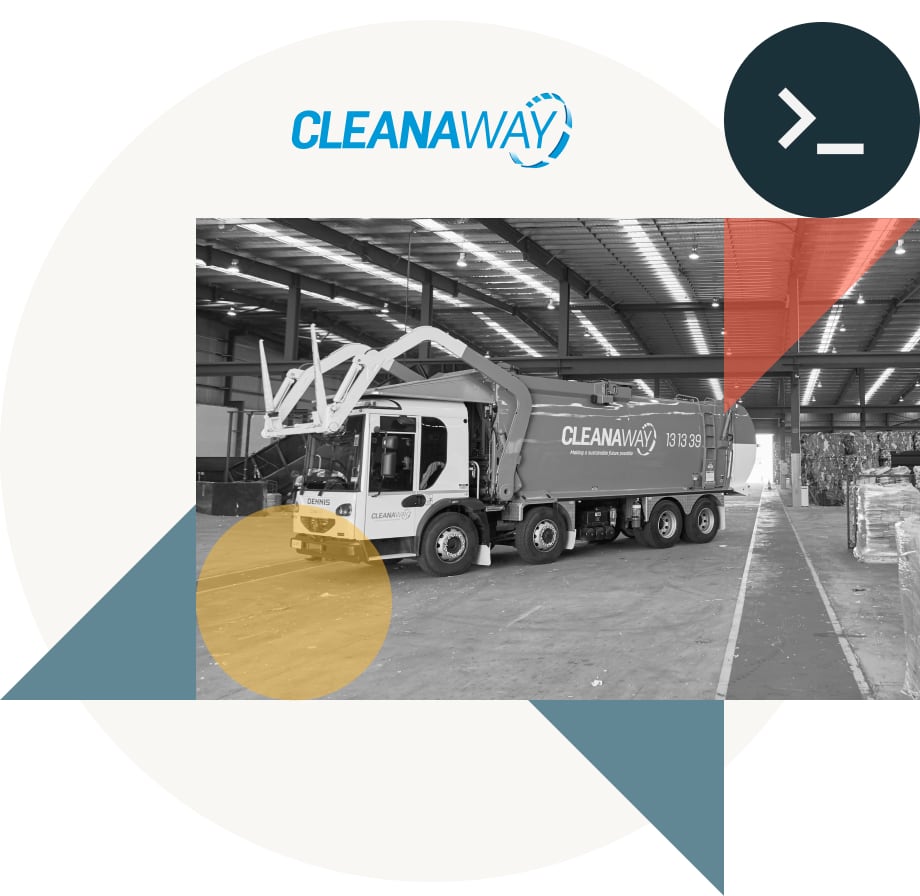Ensuring a smarter and cleaner Australia
Waste collection vehicles impacted by route optimizations

Reducing the environmental impact of waste has become a top-line strategy for organizations worldwide in order to provide a cleaner, safer planet for future generations. Such is the mission of Cleanaway, Australia’s leader in delivering efficient waste and recycling services daily to millions of households and facilities across Australia. As its diverse operations (e.g., waste collection, sorting and logistics) involved different, disparate IT systems, Cleanaway faced the complex challenge of garnering data insights from multiple, disjointed sources. Seeking to drive its data transformation journey when the pandemic first struck, Cleanaway chose Databricks Data Intelligence Platform to enhance the streamlining and integration of its data to unlock a singular, granular view of key performance indicators across its full range of business units. The Databricks Data Intelligence Platform also empowers Cleanaway to become AI-led and provide on-demand insights to maximize operational efficiency and profitability amid Australia’s evolving green economy.
Disjointed data silos impede sharing of actionable insights
Growing concerns about climate change and the need to reduce greenhouse gas emissions have been leading drivers in the adoption of digital technologies to reduce the carbon footprint of waste management activities. Cleanaway has been committed to using data to support sustainable practices, but data sprawl was a major challenge as the complexity and variability of Cleanaway’s services — including waste collection, sorting, transporting, and planning of fleet routes — generated large volumes of operational and service data scattered across multiple sources, including GPS and connected fleet systems, and structured and unstructured data from customer transactions, sales, marketing and more.
“Aggregating data sets from several systems was an inefficient and manual process. This was compounded by inconsistent data quality, which resulted in unreliable insights,” said Maayan Dermer, Head of Data, Analytics & Al/ML at Cleanaway. “These limitations hampered our ability to drive responsive and well-informed data-driven decisions.”
As part of the company’s Blueprint 2030 objectives and its ambition to become an efficient and profitable data-first business, Cleanaway looked to Databricks to implement a lakehouse architecture that could function as a single source of truth by unifying disparate and siloed data sources, and to streamline and optimize data management for analytics and machine learning use cases — from demand forecasting and ESG to predictive maintenance of waste management equipment.
Leveraging the lakehouse for a net zero transition
Cleanaway looked to the Databricks Data Intelligence Platform to underpin its enterprise data platform based on its strong reputation of unifying data silos at speed, scaling analytics and AI at cost, and exemplary technical support. Due to the ease and speed of deploying a lakehouse on Azure, the company was able to roll out modern, automated use cases for business intelligence in less than a year at lower costs.
Cleanaway has operationalized its first advanced analytics and machine learning models using MLflow and Delta Lake together with Power BI to better analyze changes to business performance metrics and to leverage key insights to improve decision-making across all aspects of the business. One of its first models in production was used to assess and optimize the most efficient daily routes possible for Cleanaway’s fleet of over 2,800 solid waste services collection vehicles. It is also able to achieve an aggregated view of each customer from across multiple systems, which has enhanced the company’s ability to respond to customer demands and highlight new growth opportunities. Already, improvements in Cleanaway’s operational efficiency, profitability and customer experience have been uncovered through these models leveraging the Databricks Data Intelligence Platform.
“The transformative outcomes from our first models built on the Databricks lakehouse have created a lot of excitement in the business. Today, all our business units and functions are looking forward to unlocking greater efficiencies, better customer experiences and increased profitability with data and AI,” said Dermer.
Unlocking AI-led business models for a future sustainable economy
With a unified lakehouse approach that simplified Cleanaway’s data stack, the company was able to eliminate the silos that traditionally separated and complicated data engineering, analytics and machine learning. This shift has not only accelerated its time to insights and ability to innovate but also boosted efficiencies and profitability in less than a year after it implemented analytical and machine learning capabilities built on Databricks Data Intelligence Platform. The transformative impact of operationalizing advanced AI models for its fleet management systems has also encouraged Cleanaway to expand its route optimization abilities across its entire fleet of 5,000 vehicles.
Looking ahead, Cleanaway plans to finalize the foundation of its organization-wide data and analytics framework and extend the implementation of its lakehouse architecture in every aspect of the business — from finance and customer services to marketing, sales and more, transforming the company toward being truly data and AI driven by 2030. “Our successful data journey with Databricks has positioned our team in a leading role for many of our key Blueprint 2030 initiatives as we continue to build upon Cleanaway’s future growth strategy,” expressed Dermer.
These efforts will continue to be a foundational component of the company’s plans to unlock new revenue streams and initiatives around Australia’s booming demand for sustainability monitoring and waste recycling, and ultimately supporting the growth of the national circular economy.

